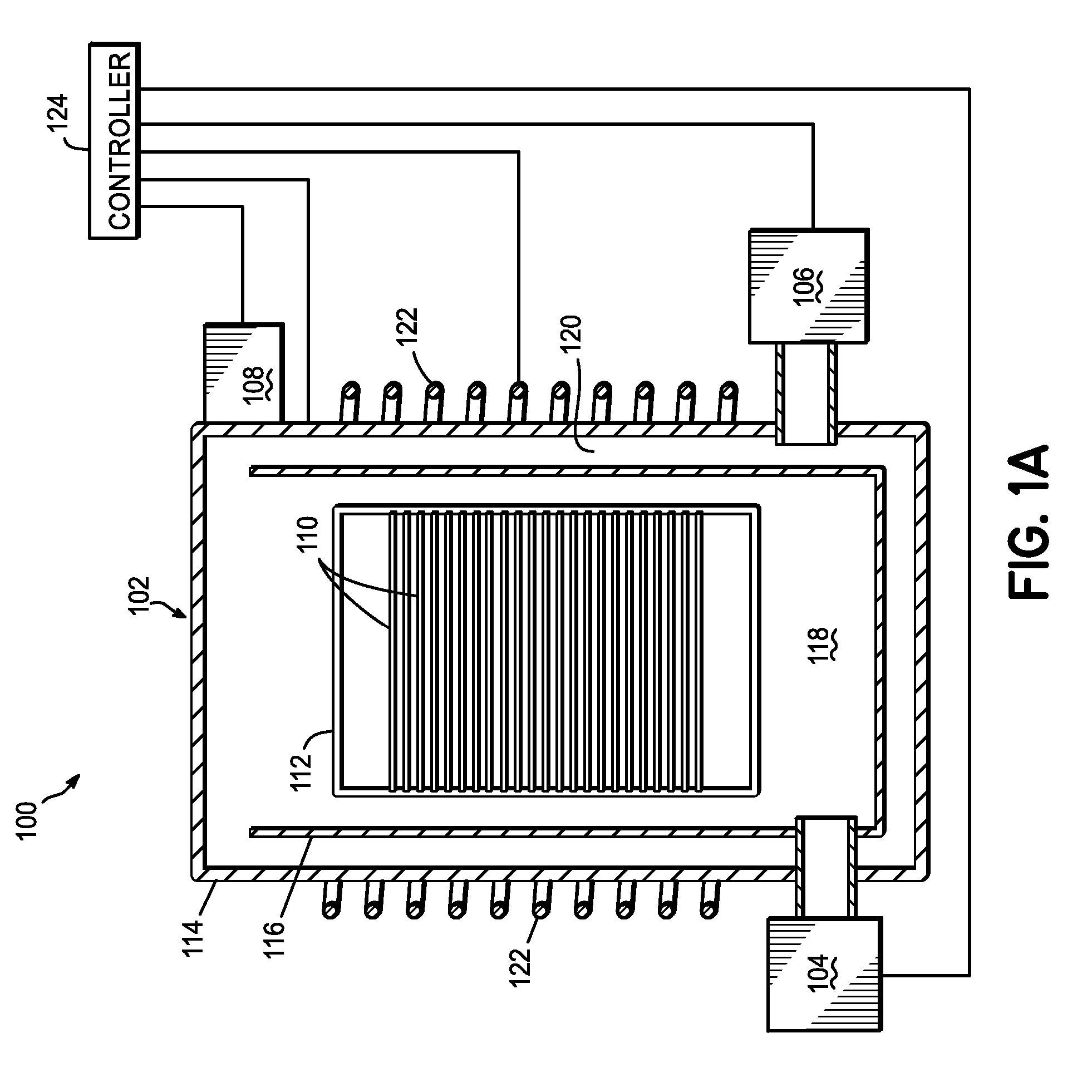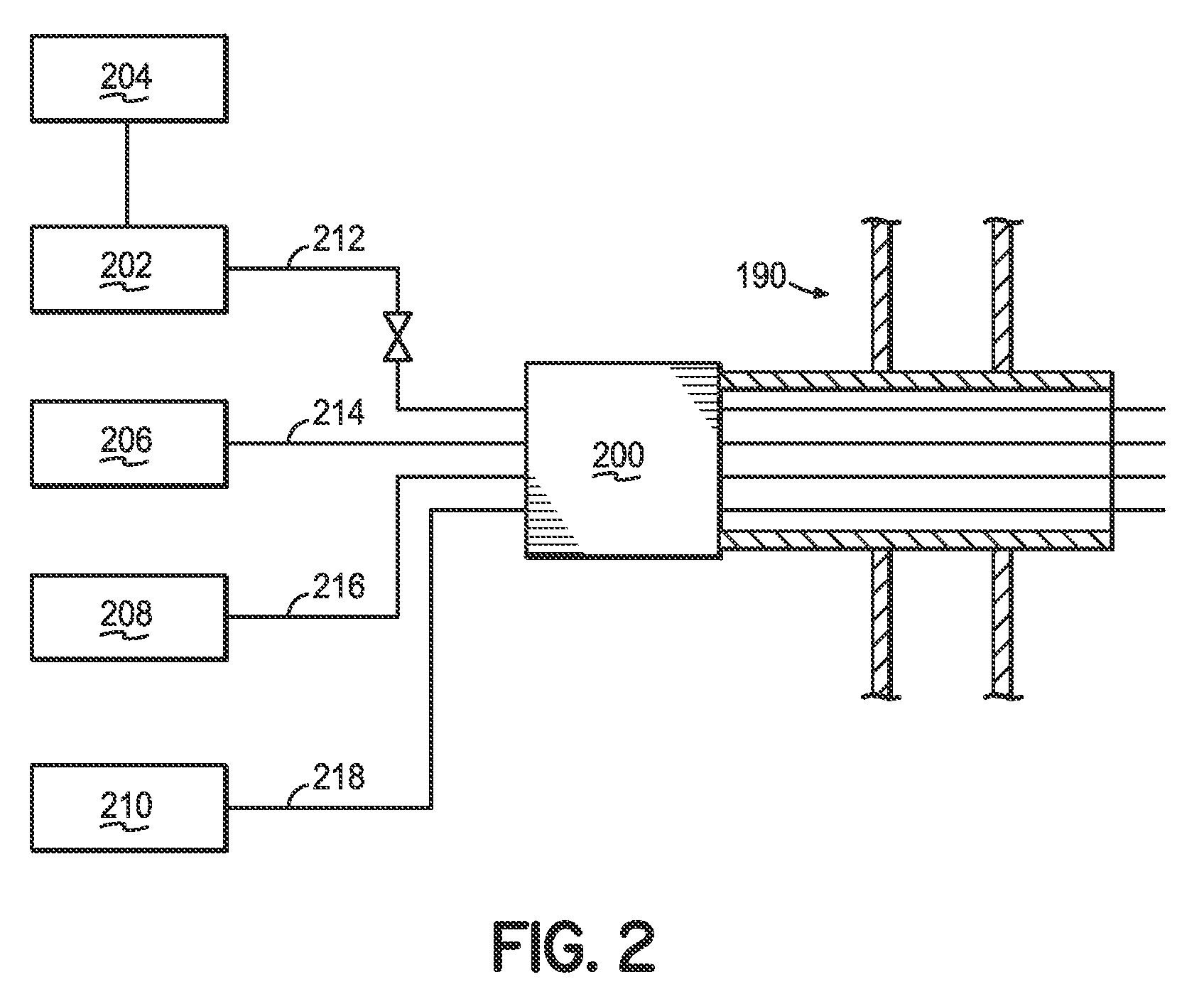In-situ atomic layer deposition
a dielectric layer and atomic layer technology, applied in the direction of coatings, chemical vapor deposition coatings, metallic material coating processes, etc., can solve the problems of deposited dielectric layers that are undensified and can cause contamination, and achieve good electrical properties and good uniformity
- Summary
- Abstract
- Description
- Claims
- Application Information
AI Technical Summary
Benefits of technology
Problems solved by technology
Method used
Image
Examples
Embodiment Construction
[0027] The present invention is directed to in-situ atomic layer deposition of an HfO2 high-k dielectric layer in a batch wafer processing system. The process includes a pre-oxidation treatment, followed by deposition by alternate exposures to an oxidizer and a hafnium tert-butoxide (HTB) or hafnium tetra-diethylamide (TDEAH) precursor, the structures of which are depicted in FIG. 4. The chamber may be purged between oxidizing and precursor exposure, and between repeating cycles of exposure to the oxidizer and precursor, and the cycles may be repeated a desired number of times. The purging process may use an inert gas, for example, such as H2 or Ar. The purge time may be any desired time for removing excess reactant from the chamber, for example, about 10 seconds to about 5 minutes, and by way of further example, about 30 seconds to about 2 minutes.
[0028] The oxidizer for the pre-oxidization treatment and for the deposition may be the same or different, and may be an oxygen-contain...
PUM
| Property | Measurement | Unit |
|---|---|---|
| temperature | aaaaa | aaaaa |
| temperature | aaaaa | aaaaa |
| temperature | aaaaa | aaaaa |
Abstract
Description
Claims
Application Information
 Login to View More
Login to View More - R&D
- Intellectual Property
- Life Sciences
- Materials
- Tech Scout
- Unparalleled Data Quality
- Higher Quality Content
- 60% Fewer Hallucinations
Browse by: Latest US Patents, China's latest patents, Technical Efficacy Thesaurus, Application Domain, Technology Topic, Popular Technical Reports.
© 2025 PatSnap. All rights reserved.Legal|Privacy policy|Modern Slavery Act Transparency Statement|Sitemap|About US| Contact US: help@patsnap.com



